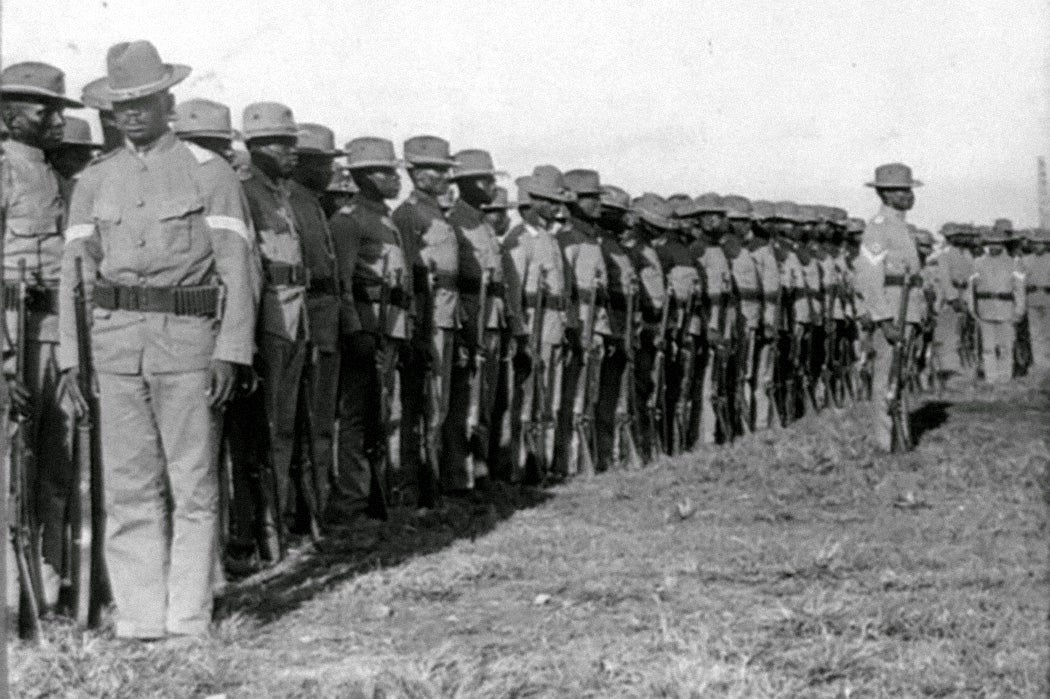The Philippine-American War of 1899-1902 is barely remembered by Americans. Even less well remembered are the more than 6,000 African American soldiers who took part.
In the immediate aftermath of the Spanish-American War of 1898, the United States annexed the Philippines. This came as a disappointment to Filipino nationalists who had welcomed American help in their revolt against Spanish colonialism. No more interested in being run by Washington, D.C., than they were in being controlled by Madrid, Filipinos under Emilio Aguinaldo waged a guerrilla war against the occupying American forces. Of the 126,500 Americans who served, 4,200 were killed. Some 20,000 Filipino soldiers were killed, along with an estimated 200,000 civilians. The Philippines would not become an independent nation until 1946.
African American soldiers in the U.S. Army included both regulars and volunteers, many of whom, writes historian Timothy D. Russell, “hoped that serving the nation during a time of crisis would open up avenues for advancement and provide an opportunity to show that they were worthy of first-class citizenship rights in American society.”
President William McKinley called the takeover of the Philippines “benevolent assimilation.” Anti-imperialist voices, including Mark Twain’s, protested against it. African American soldiers were caught up in an ironic bind between “their sense of duty, discipline and identity as soldiers” and their sympathy and compassion for other people of color suffering from white supremacy.
As Russell writes, “Given the realities of the conditions at home, where African Americans faced racial violence, increasing segregation, and widespread discrimination, African American soldiers often became frustrated over the way white American soldiers teated the Filipinos.”
Russell profiles two soldiers at odds with the “Jim Crow and overt discrimination practiced at home brought to the Philippines.” One took an extreme action: desertion. The other was punished for merely expressing sympathy for the locals.
Possibly attracted by Aguinaldo’s invitation for “solidarity against white oppressors,” David Fagan became one of the nine or so African American troops who deserted during the war. Atypically, he joined the Filipinos and took part in action against American troops before he was supposedly killed by a bounty hunter.
In a very different case, Sergeant Major John W. Calloway was stripped of his rank and dishonorably discharged for writing to a Filipino acquaintance “expressing frustration at the U.S. imperialist venture in the Philippines and revealing a sense of remorse for the future of the Filipinos under American rule.” Russell notes that Calloway’s letter ended in a “distinctly optimistic tone, counting on American morality and its dedication to democracy to win out and eventually influence the treatment of Filipinos.” That part didn’t matter. Although Calloway demanded a court martial to defend himself, he wasn’t given one. His ten years of service in Cuba and the Philippines were ignored.
Weekly Newsletter
The Army’s mistrust of African American empathy for the locals was echoed by the civilian colonial administration. The American governor of the Philippines, who believed African American troops got along too well with Filipinos, wanted to send all the African American regiments back home as soon as possible. That official happened to be William Howard Taft, who went on to become secretary of war (and, of course, president); as governor, he refused Calloway’s petition to have his discharge changed to honorable.
Russell describes Calloway’s treatment on the basis of circumstantial evidence as symptomatic of the “racism and stereotyping” of the Army. A generation later, African American soldiers in World War I would be better treated by the French than their own commanding officers. It would take most of the twentieth century to truly integrate the armed forces.







